213. According to the
perceptions of at least some of the Mayas
there evidently was a center where the Maize
God 'tree' broke through the upper crust of
the Earth Turtle,
... An iconographic study by Jeff Kowalski
suggests a cosmological layout for the
Nunnery. The higher placement of the North
Building, with its 13 exterior doorways
(reflecting the 13 layers of heaven), and
the celestial serpents surmounting the huts
identify it with the celestial sphere. The
iconography of the West Building, with 7
exterior doorways (7 is the mystic number of
the earth's surface), and figures of
Pawahtun - the earth god as a turtle -
indicate this to be the Middleworld, the
place of the sun's descent into the
Underworld.
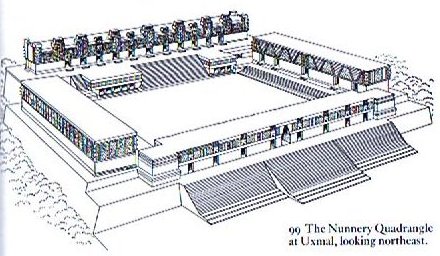
The East Building has mosaic elements
reflecting the old war cult of
Teotihuacan, where tradition had it that
the sun was born; thus, this may also be
Middleworld, the place of the rising
sun. Finally, the South Building has 9
exterior doorways (the Underworld or
Xibalba had 9 layers), and has the
lowest placement in the compex; it thus
seems to be associated with death and the
nether regions ...
and this center was between the 'year'
when the Sun was climbing high allowing Air
and Fire to enter in between Father Sky and
Mother Earth and the 'year' at the opposite
side where the Sun would follow the flow of
Sweet Water down to the other side of the
equator:

In the hard crust of Mother Earth there was
a fissure (ava)
|
Ava. 1. To
remain (of dregs, of very small
objects in the water or in a place
which used to be full of water);
he-ava, he-paroparoko,
expression, said when small fishes
swarm in the water holes along the
coast. 2. Furrow, rut, groove,
crevice, fissure; he-hahata te
ava o te henua, a crevice opened
in the ground. 3. To strike, to hit;
to sound like a blow; ku-ava-á te
poko (see also hatutiri),
thunder sounded. Vanaga. Áva-áva.
1. To lift up. 2. to strike, to hit
repeatedly; he-áva-áva i te
koreha a ruga a te ma'ea, he
struck the eel several times against
a stone (to kill it). Vanaga.
1. a) Distance,
distant; ava poto, a short
distance. b) Space, interval. PS
Mq.: ava, distance, space,
interval. Ta.: ava, interval.
The simpler form of the root is
va, which is not found in
Rapanui and Marquesan, and in
Tahiti is narrowly restricted to the
spacing of thatch, but in Nuclear
Polynesia and in the Tongafiti
migration [va] is expressive
of the sense of distance and
interval. In Samoa the same meaning
is carried by an advanced form of
the root, and ava in this
sense is not found elsewhere. Its
reappearance in these three
languages of Southeast Polynesia
points to a direct migration from
Samoa. 2. Channel, strait, pass,
passage, breach, entrance to a
harbor. Avaava. 1. a) To
strike, to slap, to grind, to dent.
b) To correct, to maltreat, to
exterminate. 2. Angle, chink. 3.
Tobacco. In this nook of Polynesia
tobacco and its common method of
pleasurable use are alike imported.
In Melanesia tobacco was indigenous
but was employed for the business of
medication and not to assuage the
conditions of cannibal society. The
leaves when fully grown were
shredded, macerated and employed as
a cataplasm. Applied upon the
abdomen it was the principal agency
in the production of emesis and
catharsis. Applied secretly in
axilla [arm-pit] it superinduced the
ecstasy of the priest when in the
trance of possession by his god. In
Fiji it was used as an insecticide.
Avahi, a wedge, to split;
avahiga, part, partial;
avahiga kore, inseparable.
Avamouga (ava 1 -
mouga 2), valley. Churchill. |
Fornander gives
three meanings:
1. Awa,
s. Haw.,
harbour, cove,
creek, channel;
awaa, to
dig as a pit, a
ditch; awawa,
a valley, space
between two
prominences,
space between
the fingers and
toes. Tah.,
ava, a
harbour,
channel. Sam.,
ava, a
boat-passage,
opening in the
reef, anchorage;
v. to be open,
as a doorway.
Marqu., ava,
interval,
passage. The
Malgasse ava,
a rainbow, may
refer to this
family, in the
sense of an
arch, a bay, a
hollow, curved
space on the
firmanent.
Sanskr.,
avaţa, a
pit; avata,
a well;
avatas,
below, in the
lower regions;
ava-kâça,
space, interval;
avama,
low, opp. to
high, probably
all referring
themselves to
ava,
prep. with the
primary sense of
'down, below,
away, off', as
its derivatives
plainly indicate.
2.
Awa,
s. Haw., fine
rain, mist.
Tong., Sam.,
afa,
storm,
hurricane;
afu,
a waterfall. N.
Zeal.,
awa,
a river. Fiji.,
cava,
a storm. Mal.,
awap,
mist, dew.
Sangvir Island,
sawan,
a river. Rotti,
Ofa, id. Tagal.,
abo-abo,
rain. Malg.,
sav,
mist, fog.
Sanskr.,
ap,
apas,
water.
Lat.,
aqua;
Romain,
ava,
water,
rain-water.
Goth.,
ahwa;
O. H. Germ.,
ouwa,
water. Germ.,
aue,
au,
brook. Swed.,
å, id.
Irish,
abh,
water;
abhan,
river. Welsh,
aw,
fluid.
Pers.,
âw,
âb,
water.
A. Pictet ...
refers the
Celtic and
Persian forms to
a Sanskrit root
av,
'ire',
whence
avana,
rapidity,
avani,
river; and he
refers the Latin
and Gothic forms
to a Sanskrit
root
aç
or
ak,
'permeare,
occupare',
from which
spring a number
of derivatives
expressive of 'le
mouvement
rapide, la force
pénétrante'
...
In view of the
Polynesian
forms, Haw.,
Sam., Tagal.,
and their
meanings, I
prefer to follow
Benfey and Bopp
in referring the
West Aryan as
well as the
Polynesian forms
to the Sanskrit
ap,
whether that be
the original
form itself or a
contracted
modification of
it.
It seems to me
to have been in
the very nature
of language that
men in the olden
times should
have commenced
by giving
distinct and
instantaneous
names to objects
around them, and
to natural
phenomena,
before they
invested those
objects with
names derived by
after-thought
and reflection
from this or
that quality
characteristic
of those
objects. Many,
if not most, of
such original
names were
doubtless lost
in the course of
ages, and
supplanted by
synonyms derived
from and
expressive of
some quality or
other in the
objects named;
but many still
survive to
baffle the
analysis of
philologists,
and to assert
their claims to
priority over
synonyms that
must necessarily
have been of
later formation.
3. Awa,
s. Haw., Sam.,
Tah., name of a
plant of a
bitter taste,
but highly
relished
throughout
Polynesia - 'Piper
Methysticum'
- from which an
intoxicating
drink is made;
the name of the
liquor itself.
Tong., N. Zeal.,
Rarot., Marqu.,
kawa, id.
Haw., awa-awa,
bitter. Sam.,
a'awa, id.
Tong., N. Zeal.,
kakawa ,
sweet.
Sanskr., av,
to please,
satisfy, desire
(Benfey); ava,
nourishment
(Pictet).
Pers., âwâ,
nourishment;
abâ, bread.
Lat., aveo,
crave after,
long for;
avena, oats.
See au 1.
|
-
at the place where the Maize God was standing high -
and this gap could correspond to the gap
illustrated in Cb1-6 at the place where the
Sun reached Arcturus (α Bootis):
... The Sun-god thence climbed up the
mother-mountain of the Kushika race as the
constellation Hercules, who is depicted in
the old traditional pictorial astronomy as
climbing painfully up the hill to reach the
constellation of the Tortoise, now called
Lyra,
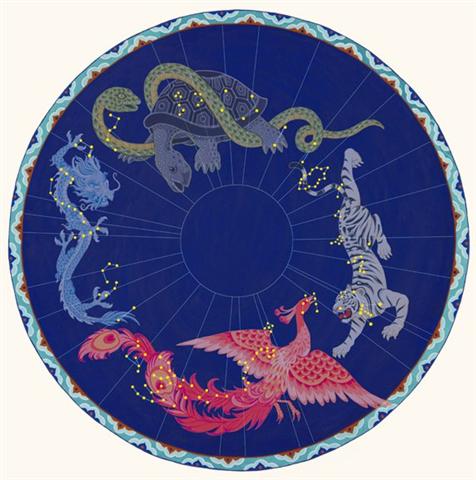
and thus attain the polar star Vega,
which was the polar star from 10000 to 8000
B.C. ...May
not this modern companion constellation,
Mons Maenalus, be from a recollection of
this early Hindu conception of our Hercules
transferred to the adjacent Bootes?
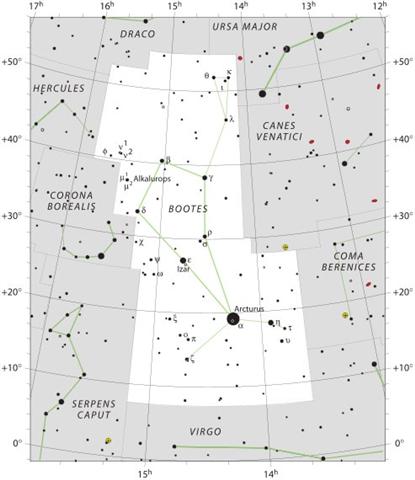
|
Tupu.
1. Shoot, sprout, bud; to
sprout, to bud. 2. Pregnant:
vî'e tupu (o te poki); to be
conceived (of fetus in its
mother's womb): he-tupu te
poki i roto i te kopú o toona
matu'a. Vanaga. To grow, to
sprout, to germinate, to come
forth, to conceive, pregnant,
germ; mea tupu, plant;
tupu ke avai, of rapid
growth; tupu horahorau,
precocious; hakatupu, to
produce, to stimulate growth, to
excite. P Pau.: fakatupu,
to raise up, to create. Mgv.:
tupu, to grow, to conceive,
to be pregnant. Mq.: tupu,
to grow, to sprout, to conceive.
Ta.: tupu, to grow, to
sprout. Churchill.
Mgv.: Tupu,
the best or worst, used of men
or of bad qualities. Sa.:
tupu, king. Ma.: tupu,
social position, dignity.
Churchill. |
|
Roto.
1. Inside. 2. Lagoon (off the
coast, in the sea). 3. To press
the juice out of a plant;
taheta roto pua, stone
vessel used for pressing the
juice out of the pua
plant, this vessel is also just
called roto. Roto o
niu, east wind. Vanaga.
1. Marsh, swamp,
bog; roto nui, pond;
roto iti, pool. 2. Inside,
lining; o roto, interior,
issue; ki roto, within,
into, inside, among; mei roto
o mea, issue; no roto mai
o mea, maternal; vae no
roto, drawers. Churchill. |
 |
 |
 |
 |
 |
 |
 |
|
*Ca14-29 (392) |
Cb1-1 |
Cb1-2 |
Cb1-3 |
Cb1-4 (396) |
Cb1-5 |
Cb1-6 |
|
te rima |
E tupu |
ki roto |
o te hau tea |
ki te henua -
te maro |
rutua |
te pahu |
|
Rutu.
1. To
read, to recite, to
pronounce words
solemnly; he-rutu i
te kohau motu, to
read the rongorongo
tablets; hare rutu
rogorogo mo hakama'a ki
te ga poki ite kai, i te
rogorogo, rongorongo
school, house in which
children were taught
reading and writing the
rongorongo signs. 2. To
pelt with stones. 3. To
gather in great numbers
(of people). Vanaga.
Sound.
Rutu-rongorongo =
the sound of recitation.
Barthel. T. Beat. Henry.
To recite; tae rutu,
irreverence. Churchill. Pau.:
rutu, a drum. Mgv.:
rutu, to beat, to
cause to resound. Ta.:
rutu, a drum, to
drum. Mq.: utu,
to drum. Sa.: lutu,
to shake a rattle.
Churchill. |
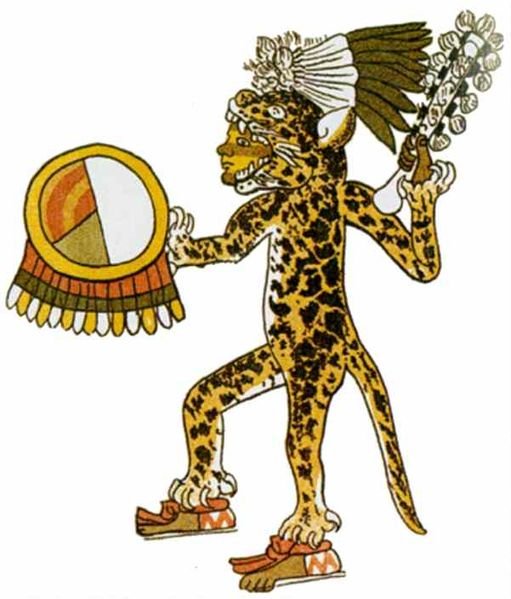 |
|
*209 + *366 |
*576 |
*577 |
*578 |
*579 |
*580 (= 20 * 29) |
*581 |
|
*575 - *366 |
*210 (= 420 / 2) |
*211 |
*212 |
*213 (= 396 - 183) |
*214 (= 2 * 107) |
*215 |
|
INVISIBLY CLOSE TO THE SUN
(helical dates): |
|
no star listed (189 + 386 - 366
= 209) |
MUPHRID
(Solitary Star) = η Bootis
(210.1), ζ Centauri (210.3) |
φ Centauri (211.0), υ¹ Centauri
(211.1), υ² Centauri (211.8), τ
Virginis (211.9) |
AGENA (At the Knee) = β Centauri
(212.1), θ Apodis (212.5),
THUBAN (Dragon) = α Draconis
(212.8) |
14h (213.1)
π Hydrae,
χ Centauri (213.0),
MENKENT
(Shoulder of the Centaur) = θ
Centauri
(213.1) |
Neck-2 (Dragon)
ASELLUS TERTIUS (3rd Ass Colt) =
κ Bootis,
κ Virginis,
14 Bootis
(214.8) |
Al Ghafr-13 (The Cover) /
Svāti-15 (Very Good) /
TAHUA-TAATA-METUA-TE-TUPU-MAVAE-6
(a pillar to stand by)
15 Bootis
(215.2),
ARCTURUS = α
Bootis
(215.4),
ASELLUS
SECUNDUS (2nd Ass Colt) = ι
Bootis
(215.5),
SYRMA (Train of the Virgin's
Robe) = ι Virginis,
λ Bootis (215.6), η Apodis
(215.8) |
|
16 |
April 17 (107) |
18 |
19 |
20 |
21 |
22 (112) |
|
CLOSE TO THE FULL MOON (and
nakshatra dates): |
|
Oct 16 |
(290 = 107 + 183) |
18 |
19 |
20 |
21 |
22 (295) |
|
ANA-NIA-10
(Pillar-to-fish by)
χ
Ceti (26.1),
POLARIS = α Ursae Minoris,
BATEN KAITOS = ζ Ceti
(26.6),
METALLAH = α Trianguli
(26.9) |
Al Sharatain-1 /
Ashvini-1 /
Bond-16 (Dog) /
Mahrū-sha-rishu-ku-1
(Front of the Head of Ku)
SEGIN = ε
Cassiopeia, MESARTHIM = γ
Arietis, ψ Phoenicis
(27.2),
SHERATAN (Pair of Signs) = β
Arietis,
φ Phoenicis (27.4) |
ι
Arietis (28.0), λ Arietis
(28.2), υ Ceti (28.8) |
ALRISHA (The Knot) = α Piscium,
χ Phoenicis (29.2),
ALAMAK
(Caracal) = γ Andromedae
(29.7) |
Arku-sha-rishu-ku-2 (Back of
the Head of Ku)
2h (30.4)
κ
Arietis (30.3),
HAMAL (Sheep) = α Arietis
(30.5)
ALKES (α Crateris)
|
η
Arietis (31.9) |
ξ¹ Ceti (32.1) |
|
209 + 183 |
393 |
394 |
395 |
214 + 182 |
397 |
398 |
 |
|
21 |
 |
 |
 |
 |
|
Cb2-4 (420 = 285 + 135) |
Cb2-5 (392 + 29) |
Cb2-6 (30) |
Cb2-7 |
|
te ua |
koia ra |
kua tuku
ki to mata - ki tona tukuga |
e kiore -
henua
-
pa rei |
|
INVISIBLY CLOSE TO THE SUN
(helical dates): |
|
π Cor.
Borealis,
UNUK ELHAIA
(Necks
of the Serpents) = λ
Serpentis
(238.1),
CHOW = β Serpentis
(238.6) |
κ Serpentis (239.3), δ Cor.
Borealis,
TIĀNRŪ = μ Serpentis
(239.5), χ Lupi, (239.6), ω
Serpentis (239.7),
BA (= Pa) = ε Serpentis,
χ Herculis (239.8). κ Cor.
Borealis, ρ Serpentis
(239.9) |
λ Librae (240.0), β Tr.
Austr. (240.3), κ Tr. Austr.
(240.4), ρ Scorpii (240.8) |
Iklīl al Jabhah-15 (Crown of
the Forehead) /
Anuradha-17 (Following
Rādhā)
/
Room-4 (Hare)
ξ Lupi, λ Cor. Bor.(241.1),
ZHENG = γ Serpentis,
θ Librae (241.2),
VRISCHIKA = π Scorpii
(241.3), ε Cor. Borealis
(241.5), DSCHUBBA
(Front of Forehead)
m = δ Scorpii
(241.7), η Lupi (241.9) |
|
Nov 14 |
15 |
16 (320) |
17 |
|
ºNov 10 (314 = 318 - 4) |
11 |
12 |
13 |
|
'Oct 18 (291 = 318 - 27) |
19 |
20 |
21 |
|
"Oct 4 (277 = 318 - 41) |
5 |
6 |
7 |
|
SEPT
11 (254 = 318 - 64) |
12 |
13 |
14 |
|
234 = 318 - 84 |
235 |
236 (= 8 * 29½) |
237 |
|
Pa.
1.
Mgv.: pa, an
inclosure, a fenced
place. Ta.: pa,
inclosure,
fortification. Mq.:
pa,
inclosure. Sa.:
pa, a wall. Ma.:
pa, a fort.
2. Mgv.: pa,
to touch. Sa.:
pa'i, id. Ma.:
pa, id. 3.
Mgv.: pa, to
prattle. Ta.:
hakapapa, to
recount. 4. Mq.:
pa, a hook in
bonito fishing. Sa.:
pa, a
pearlshell fishhook.
Ma.: pa, a
fishhook.
Pau.:
hakapa, to
feel, to touch.
Mgv.: akapa,
to feel, to touch,
to handle
cautiously.
|
|
Pae.
1. To
end, to come to an
end; ku-pae-á
taaku kai, I
have no more food;
pae-atu, to
leave en masse;
ku-pae-atu-á
tagata ki Hangaroa
tai. everybody
has left for
Hangaroa Bay. 2.
To start, to break
out (of wars,
fights: taûa);
ku-pae-á te taûa,
the fight, the
war, has started. 3.
Dressed, edged
stones anciently
used to enclose a
permanent umu;
paepae wall
of undressed stones
built as protection
against the wind;
also any other
protection. Pa'e:
Of a boat, to
deviate, to drift,
to stray under the
effects of currents
or winds;
ku-pa'e-á te vaka i
te tokerau, the
wind has made the
boat deviate from
its course. Vanaga.
Paega: 1.
Dressed stones
forming the
foundations of the
ancient houses or of
the walls of the
monumental ahus;
hare paega,
house with stone
foundations;
paega-ahu, ahu
wall. 2. Household,
people who live in a
hare paega.
3. To lay stones on
the bottom and
against the sides of
a hole: he-paega
i te rua.
Vanaga.
1.
Enough. 2. Division
of a subject (paiga).
Pau.: paega,
a party, a side.
Ta.: pae,
division, part. 3.
Threshold, sill,
joist. P Ta.: pae,
sill, joist. 4. To
exhaust, to finish,
past; e ko pae,
impregnable;
hakapae, to
exhaust, to finish,
to end, to execute,
to accomplish, to
conclude, to
consummate, to
consume, to achieve,
to acquit. Paea:
1. Enough, past. 2.
To decay, to waste
away; paea tooa,
to deprive. Paega,
foundation.
Paepae,
pavement, plank,
canoe; hakapaepae,
to lay planks, to
floor. P Pau.:
paepae, a raft.
Mgv.: paepae,
a pavement, to lay
up stones with
regularity into a
wall. Mq.: paepae,
elevated pavement on
which the house is
built. Ta.:
paepae,
pavement, raft.
Paero, all,
totalit, to sweep
off all. Churchill. |
|
Pahi.
T. Double-canoe.
Henry. |
|
Pahu.
Drum.
Pahu-rutu-roa
= Long-beating-drum.
Barthel. M. Pahū.
Tree
gong. Starzecka.
Pahu uma,
coffin; in modern
usage, any sort of
jar. Pahupahu
= To dig a hole.
Vanaga.
A
trough, barrel,
cask, cradle, drum,
chest, box;
pahu nui,
a kettle;
pahu oka,
a drawer;
pahu papaku,
coffin;
pahu rikiriki,
sheath;
pahu viriviri,
hogshead.
Pahupahu,
box. Churchill.
A
trough, barrel,
cask, cradle, drum,
chest, box;
pahu nui,
a kettle;
pahu oka,
a drawer;
pahu papaku,
coffin;
pahu rikiriki,
sheath;
pahu viriviri,
hogshead;
pahupahu,
box. P Mgv., Ta.:
pahu,
a drum. Mq.:
pahu,
a drum, a large
cylindrical
container. (To.:
bahu,
a hollow tree set in
water as a filter.)
Sa.:
pusa,
a box. To.:
buha,
id. Fu.:
pusa,
id. Niue:
puha,
id. Pau.:
puha,
id.
Pahuahi,
lantern, beacon.
Paukumi,
closet, cupboard.
Pahupopo,
a mould;
pahupopokai,
cupboard for food.
Pahure:
1. To sweep
everything away. 2.
To wound, to
lacerate, scar,
bruise, lesion,
sore;
pahurehure,
to wound, to
scratch;
hakapahure,
to wound. T Pau.:
pahure,
to be skinned;
pahore,
to peel off, to
scale. Mgv.:
pahore,
to cut off, to chop,
to slice. Ta.:
pahore,
to flay, to skin.
Churchill 2. |
"ε,
of 3.7 magnitude, was Pa,
the name of a certain
territory in China." (Allen)
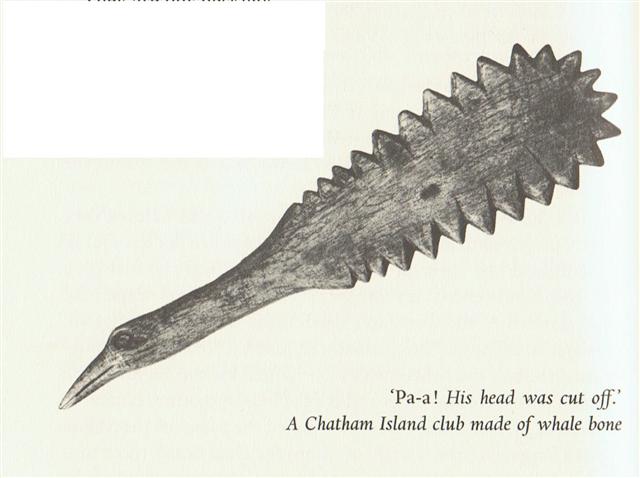 |
|
CLOSE TO THE FULL MOON (and
nakshatra dates): |
|
Al Thurayya-27 (Many Little
Ones) /
Krittikā-3 (Nurses of
Kārttikeya)
/
TAU-ONO
(Six Stones)
ATIKS = ο Persei,
RANA
(Frog) = δ Eridani
(55.1),
CELAENO (16 Tauri), ELECTRA
(17), TAYGETA (19),
ν Persei (55.3),
MAIA (20), ASTEROPE (21),
MEROPE (23)
(55.6) |
Hairy Head-18
(Cockerel) /
Temennu-3 (Foundation Stone)
ALCYONE
(56.1),
PLEIONE
(28 Tauri),
ATLAS
(27)
(56.3) |
MENKHIB (Next to the
Pleiades) = ζ Persei
(57.6)
PORRIMA (γ Virginis)
|
ZAURAK
(The Boat) = γ Eridani
(58.9) |
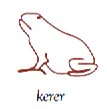 |
|
15 (135 + 365 = 500) |
May 16 (136) |
17 |
18 (*58) |
|
ºMay
11 |
12 (132) |
13 |
14 (*54) |
|
4-18
(473 = 108 + 365) |
'April 19 |
4-20 |
21 (111) |
|
"April
4 |
5 (501 - 41 = 460) |
6 (*16) |
7 |
|
MARCH 12 |
13 |
3-14 (73) |
15 |
|
417 (= 51 + 366) |
52 (= 136 - 84) |
53 (= 73 - 20) |
54 (= *58 - 4) |
|
... The Mahabharata
insists on six as the
number of the Pleiades as
well as of the mothers of
Skanda and gives a very
broad and wild description
of the birth and the
installation of Kartikeya
'by the assembled gods ...
as their generalissimo',
which is shattering,
somehow, driving home how
little one understands as
yet. The least which can be
said, assuredly: Mars was
'installed' during a more or
less close conjunction of
all planets; in Mbh. 9.45
(p. 133) it is stressed that
the powerful gods assembled
'all poured water upon
Skanda, even as the gods
had poured water on the head
of Varuna, the lord
of waters, for investing him
with dominion'. And this
'investiture' took place at
the beginning of the
Krita Yuga, the Golden
Age
... |
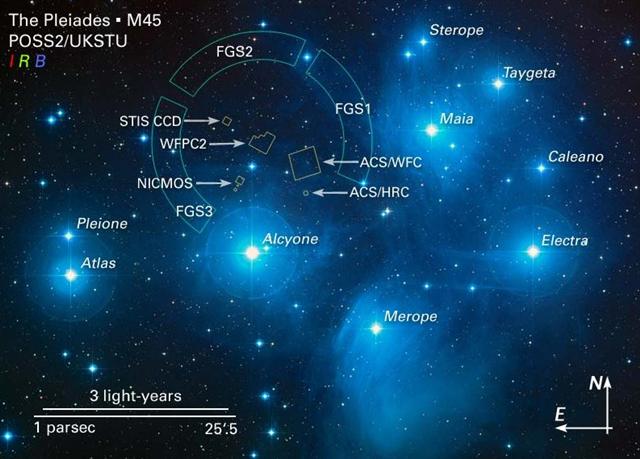 |
The Chinese cue Dog
was at their 16th station ruled by Sheratan
and at the opposite side of the sky was the
Babylonian Mad Dog (comparable to our Centaurus
constellation).
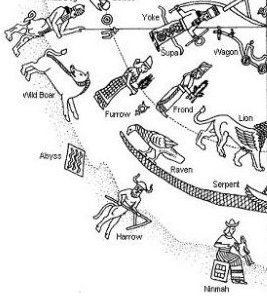
The Chinese cue Wolf
at their 15th station was in Andromeda and
from April 1 (91) to April 17 (107) there
were 16 days until the Wolf star returned to
visibility after having been too close to
the Sun for observation.
|
14 |
Wall |
γ Pegasi (Algenib) |
Porcupine |
(1.8) |
Mar 22 (81) |
|
15 |
Legs |
η Andromedae (?) |
Wolf |
(11.4) |
Apr 1 (91) |
|
16 |
Bond |
β Arietis (Sheratan) |
Dog |
(27.4) |
Apr 17 (107) |
|
17 |
Stomach |
4¹ Arietis (Bharani) |
Pheasant |
(41.4) |
May 1 (121) |
|
18 |
Hairy Head |
η Tauri (Alcyone) (?) |
Cockerel |
(56.1) |
May 16 (136) |
|
19 |
Net |
ε Tauri (Ain) |
Crow |
(65.7) |
May
25 (145) |
|
20 |
Turtle Head |
λ Orionis (Heka) |
Monkey |
(83.2) |
Jun 12 (163) |
|
21 |
Three Stars |
ζ Orionis (Alnitak) |
Gibbon |
(84.7) |
Jun 13 (164) |
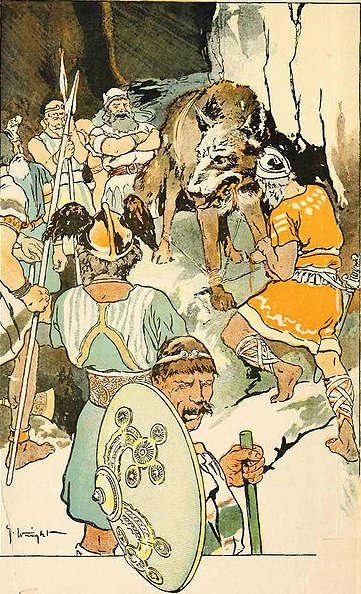
 |
 |
 |
 |
 |
 |
|
*Ca14-12 |
*Ca14-13 |
*Ca14-14 |
*Ca14-15 (378) |
*Ca14-16 |
*Ca14-17 |
|
te kihikihi |
o te henua -
kua haga hia |
kua pua |
te vero |
te henua |
kiore - te
henua |
|
ξ
Phoenicis (9.0), ρ Tucanae
(9.1),
DENEB KAITOS (Tail of the Sea
Beast) = β
Ceti,
η Phoenicis (9.4),
AL NITHĀM (String of Pearls) =
φ¹ Ceti
(9.6) |
ACHIRD (Woman with Luminous
Rays) = η Cassiopeiae
(10.7) |
Legs-15 (Wolf)
ν
Andromedae (11.0), φ² Ceti
(11.1), ρ Phoenicis (11.2),
η Andromedae
(11.4) |
CIH (Whip) = γ Cassiopeiae,
λ Tucanae (12.4), φ³ Ceti
(12.6), μ
Andromedae (12.8) |
φ4 Ceti (13.2) |
no star listed (14) |
|
March 30 |
31 |
April 1 (91) |
2 |
3 |
4 |
|
Egyptian courtyard |
 |
Phoenician heth |
 |
Greek eta |
Η (η) |
|
... The
letter shape ultimately goes back to a
hieroglyph for 'courtyard' ... possibly
named
hasir in the Middle Bronze Age
alphabets, while the name goes rather
back to
hayt, the name reconstructed for
a letter derived from a hieroglyph for
'thread'

... The kaikai are the rythmic
songs that are sung to cat's cradles,
the string games that are found not only
throughout the Pacific but throughout
the world. On premissionary Rapa Nui
the kaikai, together with their
corresponding cat's cradles, were not
simple children's games but were used,
among other things, to produce magic
effect. They were highly important for
the study of Rapa Nui's
rongorongo. This is because it was
apparently with the aid of cat's cradles
that the rongorongo experts taught their
pupils to learn many of the chants
accompanying the incised inscriptions
...
... string games could be resumed after
it was clear that the Sun had managed to
leave the horizon and was rapidly
gaining in altitude: 'Before the sun
starts to leave the horizon ... when it
shows only on the horizon, ... then
string games were no longer allowed as
they might lacerate the sun. Once the
sun had started to go higher and could
be seen in its entirety, string games
could be resumed, if one so wished. So
the restriction on playing string games
was only applicable during the period
between the sun's return and its rising
fully above the horizon
...
 |
|
 |
 |
 |
 |
 |
 |
|
*Ca14-18 |
*Ca14-19 |
*Ca14-20 (383) |
*Ca14-21 (392 - 8) |
*Ca14-22 |
*Ca14-23 |
|
te honu paka |
te henua |
honu kau |
te mata |
te honu |
kua heheu |
|
Paka.
1. Dry; to
become dry (of things);
pakapaka, to dry out.
Te paka is also the name
of the moss-covered areas,
between the small lakes of
volcano Rano Kau,
through which one can pass
without getting one's feet
wet. 2. To go, to depart;
he-paka-mai, to come;
he-oho, he-paka, they go
away. 3. To become calm (of
the sea): ku-paka-á te
tai.
Pakahera,
skull, shell, cranium;
pakahera puoko tagata,
human skull; pakahera
pikea, shell of crab or
crayfish. Gutu pakapaka,
scabbed lips. Hau paka,
fibres of the hauhau
tree, which were first
soaked in water, then dried
to produce a strong thread.
Moa gao verapaka,
chicken with bald neck.
Ariki Paka, certain
collateral descendents of
Hotu Matu'a, who
exercised religious
functions. Vanaga.
1. Crust, scab, scurf; paka
rerere, cancer; pakapaka,
crust, scabby. 2. Calm, still.
3. Intensive; vera paka,
scorching hot; marego paka,
bald; nunu paka, thin. 4.
To arrive, to come. 5. To be
eager. 6. To absorb. 7. Shin T.
Pakahera, calabash,
shell, jug. Pakahia, to
clot, curdle, coagulate.
Pakapaka, dry, arid,
scorching hot, cooked too much,
a desert, to fade away, to
roast, a cake, active; toto
pakapaka, coagulated blood;
hakapakapaka, to dry, to
broil, to toast. Pakahera
pikea, shell of crab or
crayfish. Churchill. |
|
1h (15.2)
β
Phoenicis (15.1), υ Phoenicis, ι
Tucanae (15.6), η Ceti, ζ
Phoenicis (15.7) |
Al Batn Al Hūt-26 (Belly of
the Fish) /
Revati-28 (Prosperous) / 1-iku
(Field Measure)
MIRACH (Girdle) = β
Andromedae,
KEUN MAN MUN (Camp's
South Gate) = φ Andromedae
(16.0),
ANUNITUM =
τ Piscium
(16.5),
REVATI (Abundant) = ζ
Piscium
(16.9)
REGULUS (α Leonis) |
ν Phoenicis (17.4), κ
Tucanae (17.6) |
no star listed (18) |
ADHIL (Garment's Train) = ξ
Andromedae
(19.3),
θ
Ceti (19.7) |
KSORA (Knee) = δ Cassiopeiae
(20.1), ω Andromedae (20.6), γ
Phoenicis (20.8) |
|
April 5 |
6 |
7 |
8 |
9 |
10 (100) |
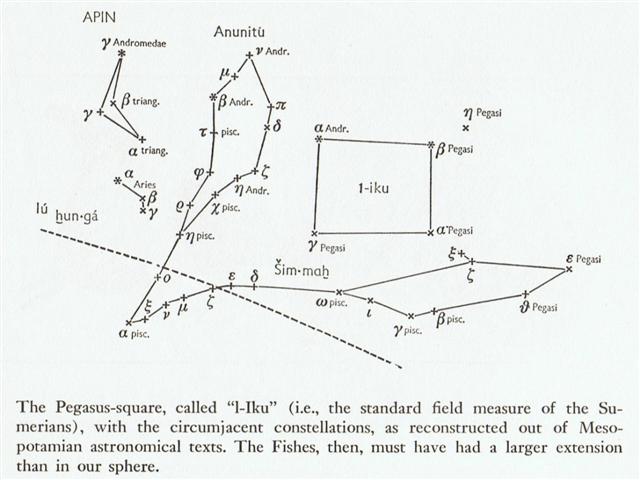 |
|






















